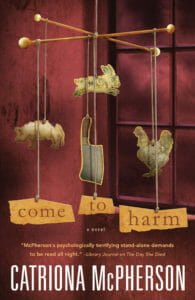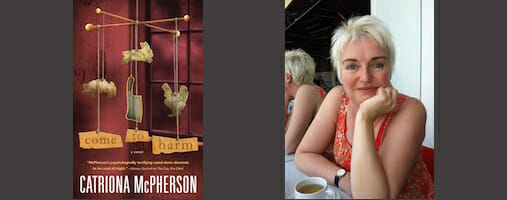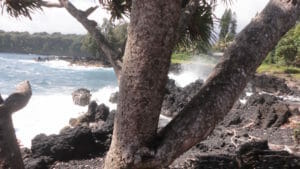 Catriona McPherson is the award-winning author of mysteries in multiple genres. She writes a 1920s detective series as well as standalone thrillers. One of the things that makes Catriona McPherson unusual is that she’s a Scottish writer who grew up on a diet that would send vegetarians running for the hills. For this interview with the current President of Sisters in Crime, we’re talking about food, culture, and the crazy ways they can clash.
Catriona McPherson is the award-winning author of mysteries in multiple genres. She writes a 1920s detective series as well as standalone thrillers. One of the things that makes Catriona McPherson unusual is that she’s a Scottish writer who grew up on a diet that would send vegetarians running for the hills. For this interview with the current President of Sisters in Crime, we’re talking about food, culture, and the crazy ways they can clash.
McPherson said that her primary concern is the story. “I want to tell the stories that are burning a hole in me. Sometimes an issue bubbles up while I’m writing: for instance, I wrote a book set during the UK General Strike in 1926 and was so angry about the plight of the miners that a lot of tub-thumping and fist-shaking went into the first draft. It got cut out of the second, though.”
“Come to Harm,” Catriona McPherson’s latest standalone thriller, was inspired by events that took place while she was doing her PhD in Edinburgh in the 1990s.
“Three of my friends were young women from Japan: Etsuko Oishi, Mariko Kondo and Yuko Kondo. We talked and laughed a lot about the culture shock of Scottish food for Japanese people. Then, when I started writing fiction, I lived near Castle Douglas, a town with three thousand inhabitants and four thriving butcher’s shops, including my favourite—Grierson Brothers—who raise their own stock, and produce their own fantastic sausages, meat pies, meat pates, meat, meat, meat.”
McPherson was fascinated by what a Japanese visitor would make of such a butcher shop and what fears she might have about the food. “Years later, ‘Come To Harm’ is the result of that musing turned into psychological suspense.” McPherson said that like the character Keiko in the story she is also a fish out of water.
“I moved from Castle Douglas to Davis, CA, in 2010 and met my own version of an alien food culture. I remember asking the carpenter who was working on my new house to identify a strange object someone had given me in a welcome basket. ‘It’s a guava,’ he said, in the voice I’d use to tell someone ‘it’s an onion.’ He only just managed not to say ’It’s a guava, you idiot.’
I did consider a Scottish heroine in the US, but the clash of Japanese food habits and Scottish food habits was more extreme and funnier. Also, when I poke fun at Scottish cooking—all that lard!—I’m laughing at my own people. I haven’t been in the US long enough to have earned the right to make jokes yet. Although, let me tell you, when my clean-your-plate upbringing met modern American portions I put on twenty pounds in a year. I’m still working on losing the immigration weight.”
One challenge McPherson faced while working on “Come to Harm” was writing about the food, but not being able to eat it. She said, “I miss the meat pies of home. Pork pies—cold pork and jelly in a hot water pastry shell, steak pies—cubed beef with gravy in flaky pastry, sausage rolls—sausage meat in flaky pastry, bridies—minced beef in shortcrust, pasties—cubed lamb and vegetables in puff, and the pie of pies—known simply as ‘a pie’—which is peppery mutton in a small, round, suety case. They’re so iconic, I’ve got them on my website.
“When we were moving into the new house, my husband asked in all seriousness how you could expect people to help you shift your stuff in a country without pork pies. Now we know that the answer is pizza.”
McPherson joked that “Come to Harm” should probably come with a warning label—Not Suitable for Vegetarians. She added, “But, it could also carry a guarantee that I was brought up on the food in the book—steak and kidney pudding, tripe and onions, potted hough—and it never did me any harm. Will Keiko be as lucky? Not telling.”
Catriona McPherson wrote her first 1920s detective story because she loved the novels of Dorothy L Sayers, Ngaio Marsh, Michael Innes and Margery Allingham. She added, “As well as her Extreme Awesomeness, Dame Agatha. I’ve now written ten of them and am working on No.11.”
Recognizing that not every story is right for that time and that character—a gently-born lady turned private-eye—she also chose to write the standalone thrillers. McPherson said, “The stand-alone novels, including ‘Come To Harm,’ are not exactly more realistic—I would argue that all crime fiction is pretty unrealistic—but they’re closer to my reality. Spoiler alert: I am not a posh, conservative Victorian. I’m lucky to be able to write both and I haven’t had any fans of one lot complain about the others. Yet.”
More about Catriona McPherson
Learn more about Catriona McPherson on her website at catrionamcpherson.com. In 2014, McPherson won the Anthony for Best Paperback Original for her standalone thriller, “As She Left It.”


Great interview! I am going to check out her books! Thank you!
Thanks Barbara, I’m glad you liked the interview and I’m sure Catriona will like the idea of a new reader!